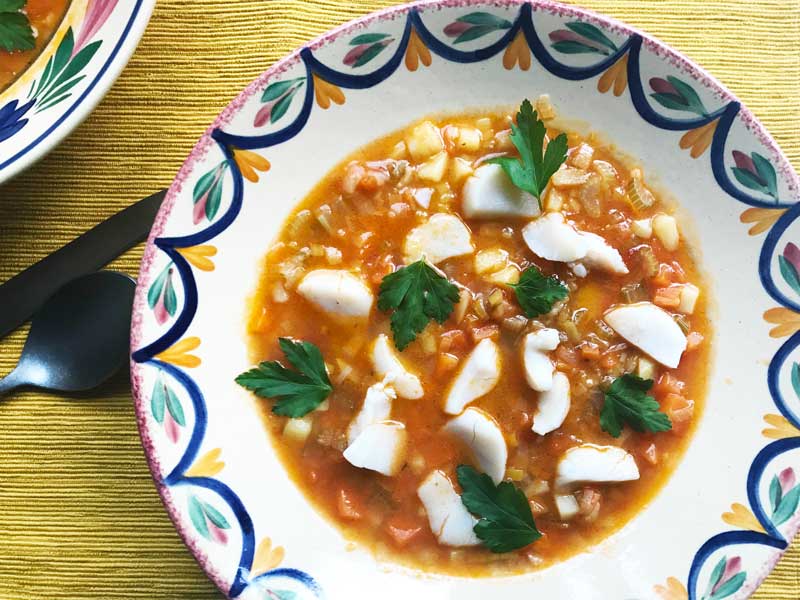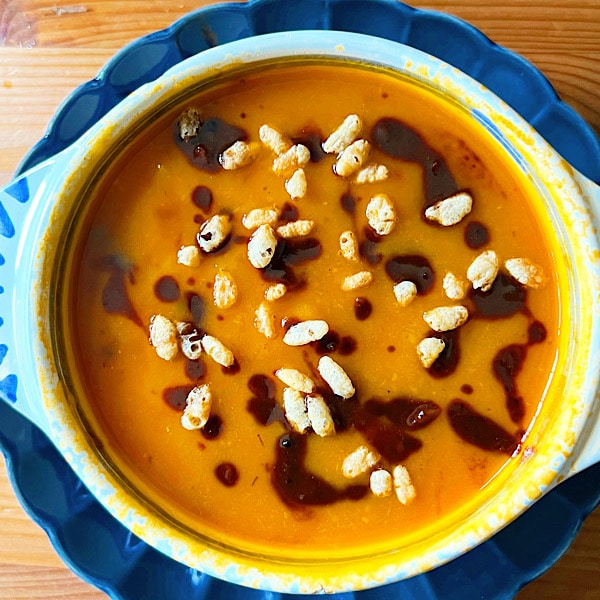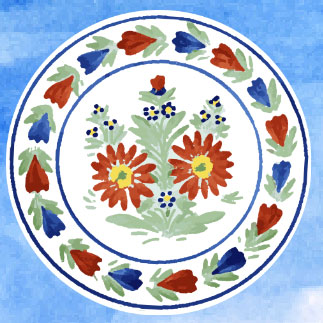“Caught on Thursday, shucked on Friday…I ate some Saturday, and you should have yours today (Sunday) or tomorrow (Monday).”
So went the message on my voicemail from my fisherman neighbor who left his eight ‘leftover’ scallops on my doorstep while I was out. His tone was apologetic—the scallops were already three days old and therefore, nearly gone bad for someone who’d be heading out to fish for more the next day. In the real world, three days is about what it takes for shucked scallops to reach a seafood store. But here in Cancale, the clock is ticking on my eight little unexpected jewels.
My go-to scallop technique has always been to sear them (just like everyone else in the whole wide world, it seems). Alternately, when they’re really fresh, to serve them raw in a carpaccio or ceviche. But since these arrived on my doorstep (literally) and cost me nothing, I thought I might give something else a try. A piping hot, veggie-laden stew came to mind. But who has ever heard of scallop stew?
Quite a few people according to Google. Most of their recipes were akin to oyster stew, with a little poaching and a lot of cream, which wasn’t really what I was looking for. A Peruvian scallop stew seemed promising, but it called for a chili paste I don’t have, then instructed me to steam the scallops in the stew before serving. My brow furrowed and my lips pursed as I read those instructions…That steaming sounded like a risky business to me. It’s hard enough to get searing scallops just right without overcooking and rubberizing them to stringy, chewy globs. Steaming them for an unspecified amount of time (what if I didn’t serve it immediately?) at an imprecise temperature seemed like a crapshoot to me. What I needed then was a way to cook the scallops beforehand (but not sear them) so I could safely add them to the hot stew without worrying about the rubber factor.
Velveting turned out to be the solution—and an easy solution at that. Velveting is an Asian technique that calls for marinating seafood or meat (basically any kind of animal protein) in a cornstarch egg white, and rice wine mixture, then pre-cooking it in water (or oil) before using the ingredient in a given recipe. The cornstarch slurry protects the chosen protein from heat extremes while sealing in moisture. (Ever wonder why chicken meat and pork in restaurant stir-fries are so very tender? Chalk it up to velveting).
I mixed up a Westernized version of a velveting slurry by substituting white wine for the Chinese rice wine that’s usually called for, then blanched the scallops briefly in barely simmering water. And…well…wow. The marinade had brought out the scallops’ sweetness —and turned them snowy white. What’s more, the strained cooking liquid went into the stew and infused it with incredible scallop flavor. It tasted like something that could have come from a Michelin-starred restaurant…but it only required about an hour to make from start to finish—and that’s counting the marinating time. (As an added bonus, it stretched eight scallops to serve four people.) ‘Stew’ as a name was no longer up to snuff so I’ve called it a ‘nage,’ which sounds fancier and is closer to how the recipe turned out.
Velveting Mixture
1 egg white
1 Tbs. white wine
1 Tbs. oil
1 heaping Tbs. cornstarch
½ tsp. salt
Stew
8 large scallops (1/3 lb./150 g.), rinsed and drained
2 Tbs. olive oil
2 carrots, finely diced (1 cup)
1 medium leek, white part finely diced (1 cup)
½ head fennel or 2 stalks celery, finely diced (1 cup)
¼ cup dry white wine
3 to 4 yukon gold or red-skinned (boiling) potatoes, peeled and finely diced
¼ cup tomato purée, optional
sprig fresh thyme
TO MAKE THE VELVETING MIXTURE: Whisk together the egg white white wine, and oil in a small bowl. Whisk in the cornstarch and salt. Cut each scallop into thirds or fourths (depending on the thickness), then halve the scallop disks, and place them in a medium bowl. Toss the scallops with enough of the velvet mixture to coat well. Refrigerate/marinate ½ hour, or overnight. (The rest of the velvet mixture will keep up to 1 week.)
BRING 4 cups of water to a bare simmer in a medium saucepan. Drain the scallops (but do not rinse them), and discard the velveting slurry. Drop the scallops in the barely simmering water, and cook 20 to 30 seconds, or until the scallops turn opaque. Transfer the blanched scallops to a paper towel-lined plate.
STRAIN the scallop cooking water, and set aside. (You should have about 3 cups/700 ml.)
HEAT the olive oil in a medium saucepan over medium heat. Add the carrots, leek, and fennel, and sauté 5 to 7 minutes, or until softened. Add the wine and simmer 1 to 2 minutes, or until all the liquid has evaporated. Add the potatoes, the tomato purée (if using), the thyme sprig, and the reserved scallop cooking water. Season with salt, cover, and simmer 15 to 20 minutes, or until the vegetables are tender.
REMOVE the thyme sprig. Stir in the blanched scallops and reheat gently, if necessary, just before serving.



Leave A Comment